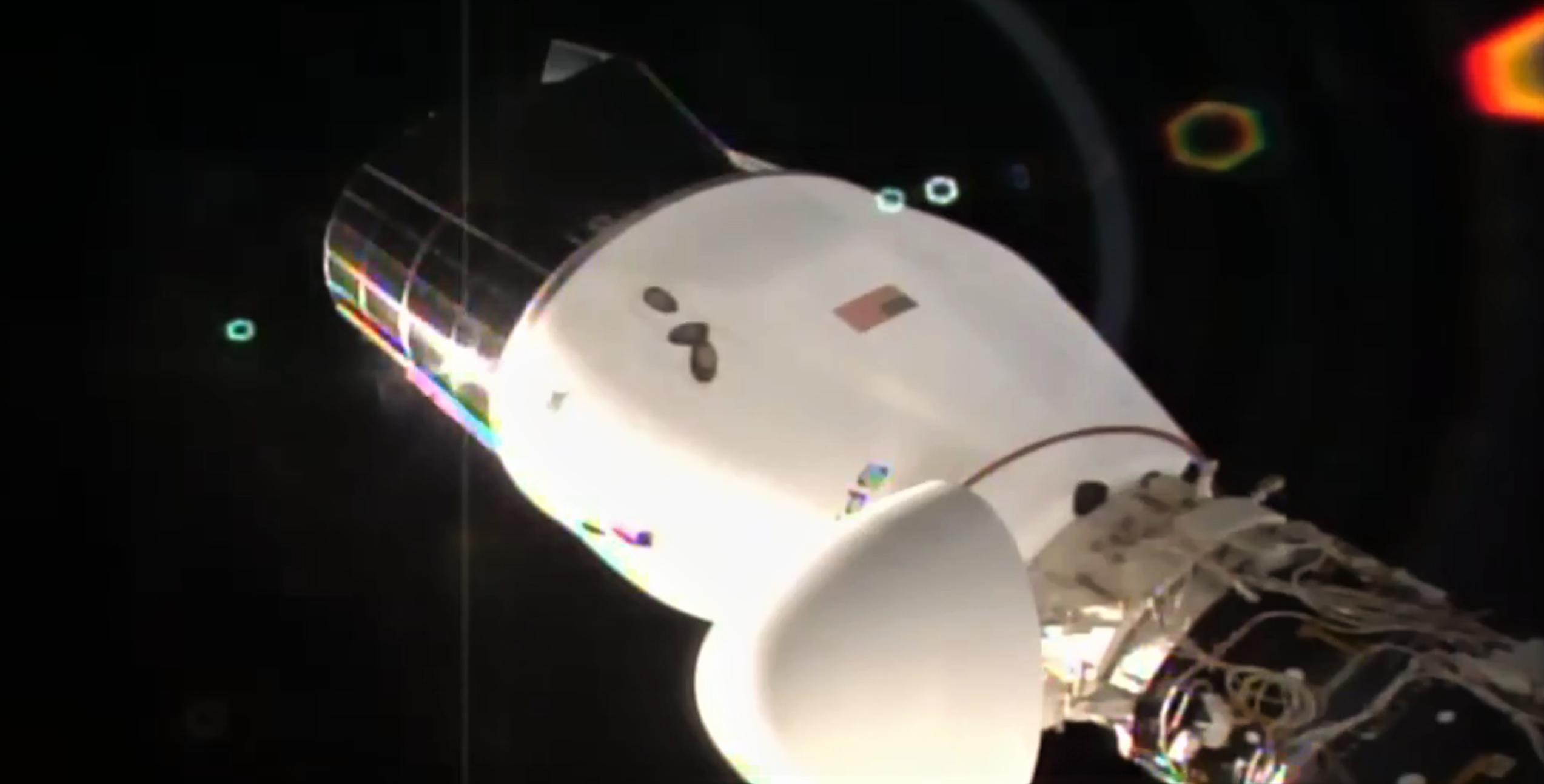
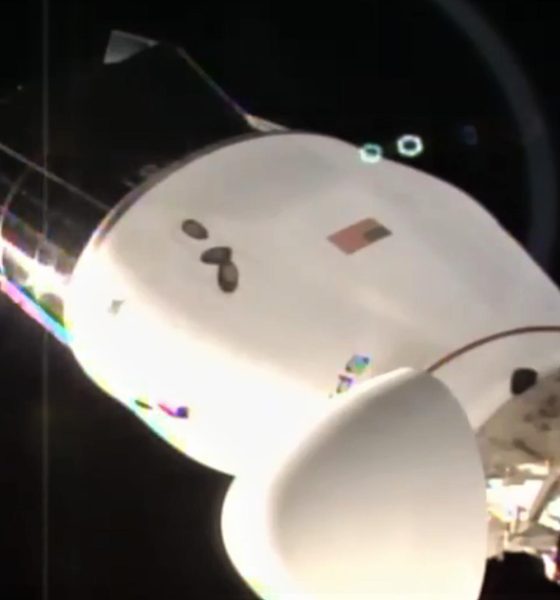
News
SpaceX’s first Cargo Dragon 2 recovery delayed by Atlantic Ocean weather
Update: The first undocking, orbital reentry, and splashdown of SpaceX’s upgraded Dragon 2 cargo spacecraft was aborted by NASA ground controllers minutes before the process was scheduled to begin. According to NASA, weather in the preferred recovery zone – off the coast of Daytona Beach, Florida – was to blame.
“As a result of adverse weather conditions at the targeted splashdown zone off the coast of Daytona Beach, Florida, SpaceX has waved off today’s planned departure of an upgraded SpaceX Dragon resupply spacecraft. Teams are currently assessing weather conditions to determine the next opportunity for undocking.”
NASA – January 11th, 2021
SpaceX’s upgraded Cargo Dragon spacecraft is just a day or two away from its first International Space Station (ISS) departure, Earth reentry, and ocean splashdown.
The uncrewed Dragon capsule (known as C208) and its expendable trunk section are currently scheduled to depart from the ISS no earlier than the morning (EST) of January 12th – set to be the first time an uncrewed US cargo spacecraft autonomously undocks from the orbital outpost. Previous US cargo vehicles – including SpaceX’s own Cargo Dragon – have relied on berthing, rendezvousing with the ISS and hovering close by while a giant robotic arm was used to capture and secure each spacecraft.
Cargo Dragon 2 wont be the first outright to do so: the uncrewed European ATV and Russian Progress vehicles both used the Russian Docking System (RDS) to deliver cargo to the ISS over the last two decades. However, Dragon’s CRS-21 departure will be the first time an uncrewed cargo spacecraft completes a full mission with the help of NASA’s new International Docking Adapter (IDA), as well as an IDA’s third round-trip use ever.
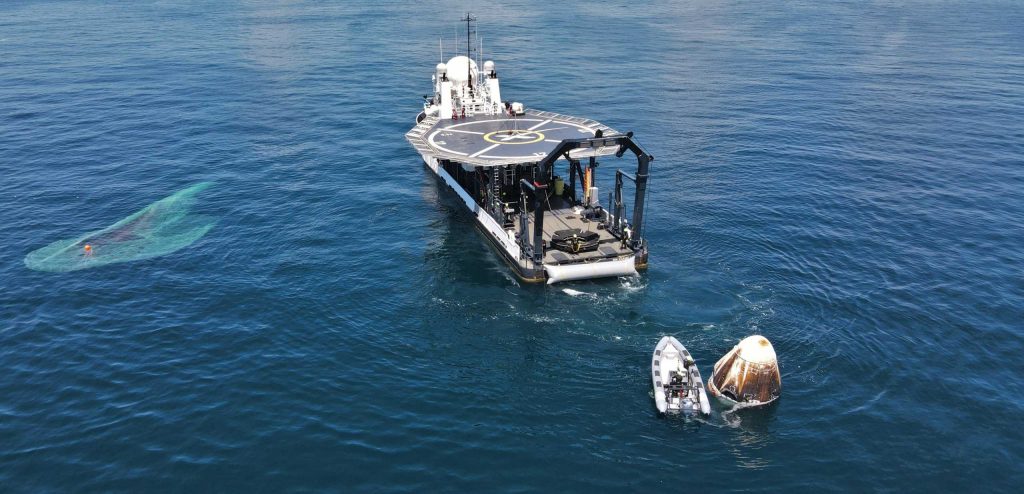
In fact, SpaceX is solely responsible for the four total uses of the Space Station’s twin IDA ports – both fittingly delivered by Cargo Dragons in 2016 and 2019. In March 2019, Crew Dragon – flying without astronauts on its Demo-1 mission – became the first spacecraft ever to autonomously dock with and undock from an IDA port. In May and August 2020, a separate Crew Dragon spacecraft repeated the feat, autonomously docking and undocking with two NASA astronauts onboard.
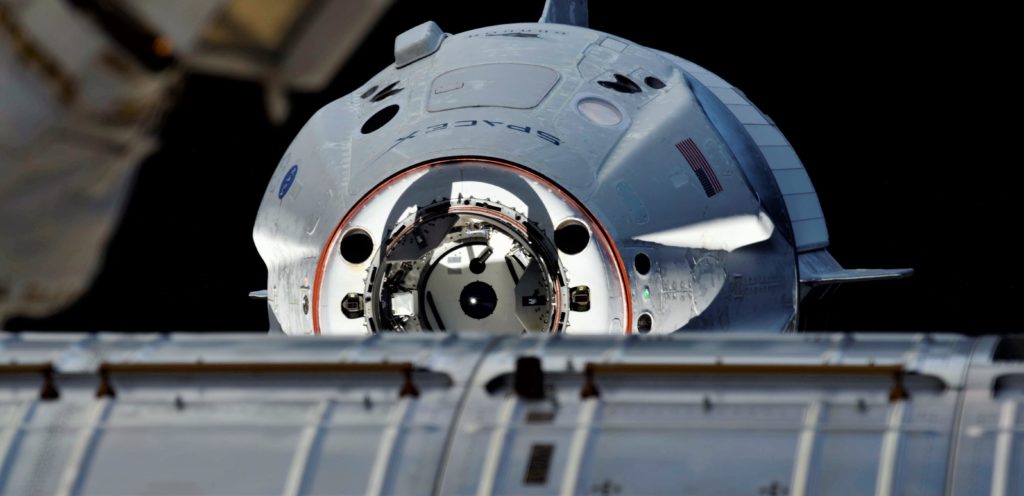
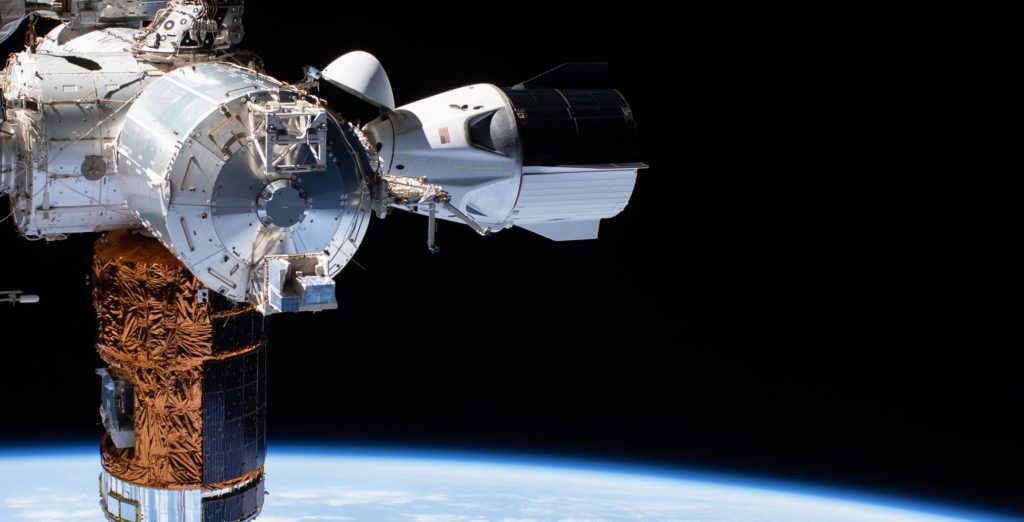
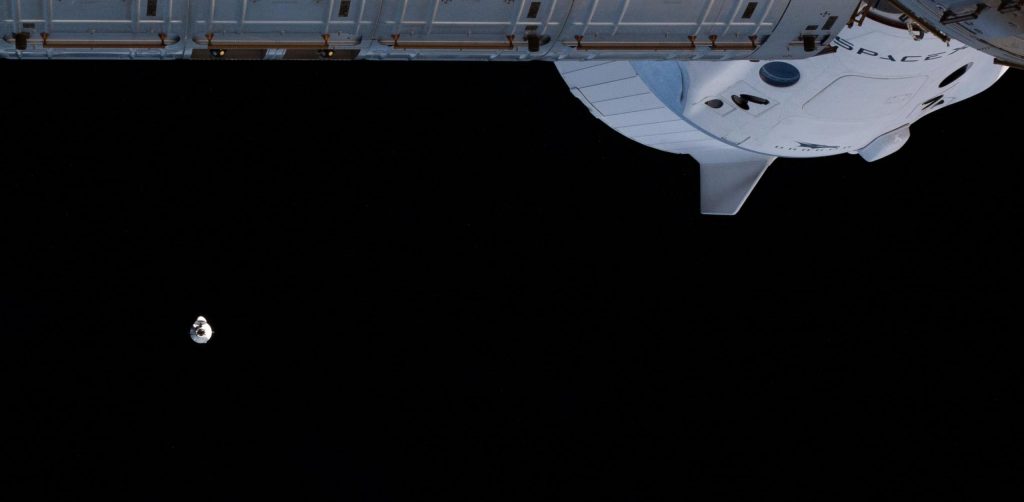
In November 2020, SpaceX launched Crew Dragon on its first operational ferry mission with four astronauts. The spacecraft safely docked to the ISS and is scheduled to remain there until at least March or April 2021. Most recently, SpaceX launched its first Cargo Dragon 2 on December 6th, 2020, and the spacecraft docked without issue a day later. Now scheduled to undock as early as January 12th, a successful departure, reentry, and splashdown will truly mark the start of a new era of autonomous SpaceX spacecraft.
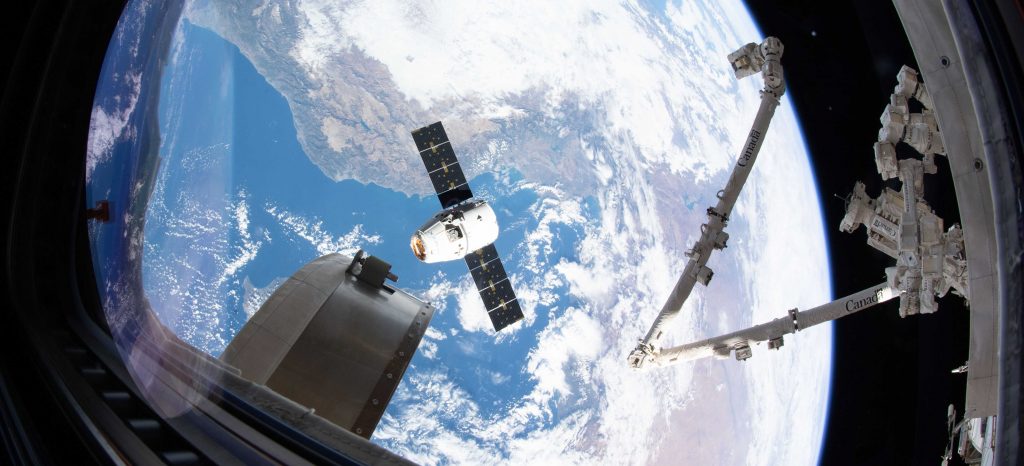
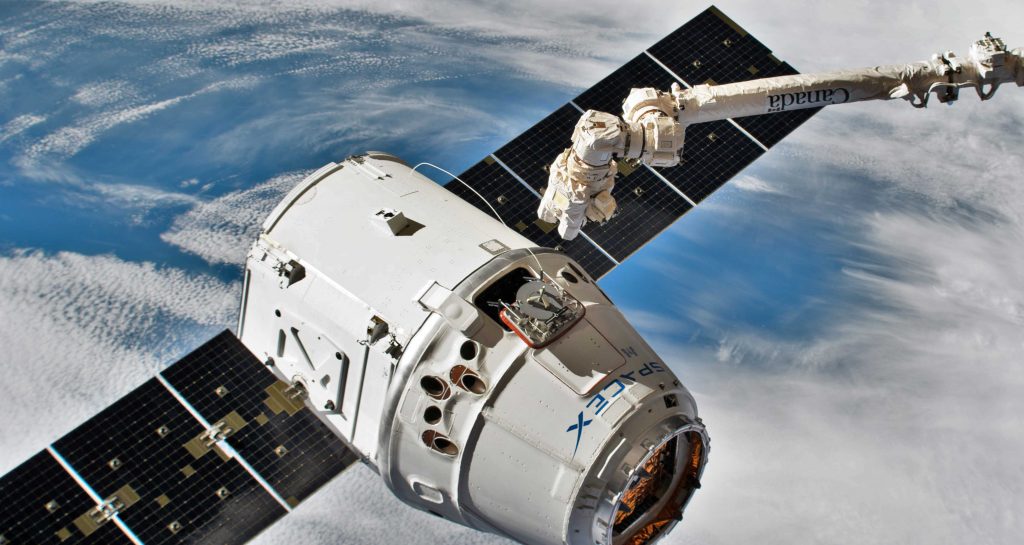
Unlike the largely manual berthing method used by Japanese HTV, Orbital ATK Cygnus, and SpaceX Cargo Dragon spacecraft, SpaceX’s Crew Dragon and Cargo Dragon 2 vehicles took advantage of IDA’s mechanical differences to heavily automate the cargo and crew delivery process. Using LiDAR, cameras, complex software, SpaceX’s new Dragons effectively dock themselves, ultimately requiring less training and work for the station astronauts that would otherwise need to manually support berthing operations.
Used to support refrigerated or otherwise power-intensive cargo, Cargo Dragon 2 features twice as many “powered lockers” as its predecessor and is scheduled to return an impressive ~2360 kg (5200 lb) of cargo – including dozens of science experiments – to Earth. More than a decade after Dragon became the first private spacecraft to successfully reenter Earth’s atmosphere, Cargo Dragon is still the only spacecraft in the world capable of delivering substantial cargo from Earth to orbit and from orbit to Earth.

After detaching from its expendable trunk section and reentering Earth’s atmosphere, Cargo Dragon C208 will also become the first cargo spacecraft to splash down in the Atlantic Ocean or Gulf of Mexico thanks to SpaceX’s decision to consolidate its California and Florida Dragon recovery operations on the East Coast.
Also used to recover Crew Dragons, SpaceX ship GO Searcher departed Port Canaveral for its central role in CRS-21’s imminent splashdown. Once Cargo Dragon C208 splashes down at one of four available recovery zones, SpaceX recovery teams will grab and secure the spacecraft and open its hatch. Uniquely time-sensitive cargo can then be transferred to a waiting helicopter for an unprecedentedly rapid return to researchers back on land,
Stay tuned for SpaceX and NASA’s live coverage of Cargo Dragon 2’s first ISS departure and recovery on January 12th or 13th.

News
Tesla hints at Starlink integration with recent patent
“By employing polymer blends, some examples enable RF transmission from all the modules to satellites and other communication devices both inside and outside the vehicle.”

Tesla hinted at a potential Starlink internet terminal integration within its vehicles in a recent patent, which describes a vehicle roof assembly with integrated radio frequency (RF) transparency.
The patent, which is Pub. No U.S. 2025/0368267 describes a new vehicle roof that is made of RF-transparent polymer materials, allowing and “facilitating clear communication with external devices and satellites.”
Tesla believes that a new vehicle roof design, comprised of different materials than the standard metallic or glass elements used in cars today, would allow the company to integrate modern vehicular technologies, “particularly those requiring radio frequency transmission and reception.
Tesla has recently filed a US patent application on integrating RF transparent materials into the roof structure.
“facilitating clear communication with external devices and satellites”
Tesla fleet is getting @Starlink connectivity integration soon. LFG @Tesla @elonmusk… pic.twitter.com/bLa8YtPLd1
— Chansoo Byeon (@Chansoo) December 9, 2025
Instead of glass or metallic materials, Tesla says vehicles may benefit from high-strength polymer blends, such as Polycarbonate, Acrylonitrile Butadiene Styrene, or Acrylonitrile Styrene Acrylate.
These materials still provide ideal strength metrics for crashworthiness, stiffness for noise, vibration, and harshness control, and are compliant with head impact regulations.
They would also enable better performance with modern technologies, like internet terminals, which need an uninterrupted signal to satellites for maximum reception. Tesla writes in the patent:
“By employing polymer blends, some examples enable RF transmission from all the modules to satellites and other communication devices both inside and outside the vehicle.”

One of the challenges Tesla seems to be aware of with this type of roof design is the fact that it will still have to enable safety and keep that at the forefront of the design. As you can see in the illustration above, Tesla plans to use four layers to increase safety and rigidity, while also combating noise and vibration.
It notes in the patent that disclosed examples still meet the safety requirements outlined in the Federal Motor Vehicle Safety Standards (FMVSS).
Starlink integrated directly into Tesla vehicles would be a considerable advantage for owners. It would come with a handful of distinct advantages.
Initially, the inclusion of Starlink would completely eliminate cellular dead zones, something that is an issue, especially in rural areas. Starlink would provide connectivity in these remote regions and would ensure uninterrupted service during road trips and off-grid adventures.
It could also be a critical addition for Robotaxi, as it is crucial to have solid and reliable connectivity for remote monitoring and fleet management.
Starlink’s growing constellation, thanks to SpaceX’s routine and frequent launch schedule, will provide secure, stable, and reliable internet connectivity for Tesla vehicles.
Although many owners have already mounted Starlink Mini dishes under their glass roofs for a similar experience, it may be integrated directly into Teslas in the coming years, either as an upgrade or a standard feature.
News
Tesla supplements Holiday Update by sneaking in new Full Self-Driving version
It seems Tesla was waiting for the Hardware 4 rollout, as it wanted to also deploy a new Full Self-Driving version to those owners, as it appeared in the release notes for the Holiday Update last night.

Tesla has surprised some owners by sneaking in a new Full Self-Driving version with the wide release of the Holiday Update, which started rolling out to Hardware 4 owners on Friday night.
Tesla has issued a controlled and very slow release pattern with the Holiday Update, which rolls out with Software Version 2025.44.25.5.
For the past two weeks, as it has rolled out to Hardware 3 and older Tesla owners, the company has kept its deployment of the new Software Version relatively controlled.
It seems Tesla was waiting for the Hardware 4 rollout, as it wanted to also deploy a new Full Self-Driving version to those owners, as it appeared in the release notes for the Holiday Update last night.
Tesla Full Self-Driving v14.2.1.25 made its first appearance last night to Hardware 4 owners who are members of the Early Access Program (EAP). It appears to be a slight refinement from FSD v14.2.1, which has been out for a couple of weeks.
Tesla v2025.44.25.5 Holiday update incoming
Also Full Self-Driving v14.2.1.25!!! pic.twitter.com/74D7S0UGXz
— TESLARATI (@Teslarati) December 13, 2025
Many owners welcome the new FSD version, us included, because we’ve been less than impressed with v14.2.1. We have experienced some minor regressions with v14.2.1, especially with Speed Limit recognition, Speed Profile tinkering, and parking performance.
As it stands, Full Self-Driving is still particularly impressive, but Tesla is evidently having an issue with some of the adjustments, as it is still refining some of the performance aspects of the suite. This is expected and normal with some updates, as not all of them are an improvement in all areas; we routinely see some things backtrack every once in a while.
This new FSD version is likely to take care of those things, but it also includes all of the awesome Holiday Update features, which include:
- Grok with Navigation Commands (Beta) – Grok will now add and edit destinations.
- Tesla Photobooth – Take pictures inside your car using the cabin-facing camera
- Dog Mode Live Activity – Check on your four-legged friend on your phone through periodic snapshots taken of the cabin
- Dashcam Viewer Update – Includes new metrics, like steering wheel angle, speed, and more
- Santa Mode – New graphics, trees, and a lock chime
- Light Show Update – Addition of Jingle Rush light show
- Custom Wraps and License Plates – Colorizer now allows you to customize your vehicle even further, with custom patterns, license plates, and tint
- Navigation Improvements – Easier layout and setup
- Supercharger Site Map – Starting at 18 pilot locations, a 3D view of the Supercharger you’re visiting will be available
- Automatic Carpool Lane Routing – Navigation will utilize carpool lanes if enabled
- Phone Left Behind Chime – Your car will now tell you if you left a phone inside
- Charge Limit Per Location – Set a charge limit for each location
- ISS Docking Simulator – New game
- Additional Improvements – Turn off wireless charging pad, Spotify improvements, Rainbow Rave Cave, Lock Sound TRON addition
Tesla also added two other things that were undocumented, like Charging Passport and information on USB drive storage to help with Dashcam.
Cybertruck
Tesla updates Cybertruck owners about key Powershare feature

Tesla is updating Cybertruck owners on its timeline of a massive feature that has yet to ship: Powershare with Powerwall.
Powershare is a bidirectional charging feature exclusive to Cybertruck, which allows the vehicle’s battery to act as a portable power source for homes, appliances, tools, other EVs, and more. It was announced in late 2023 as part of Tesla’s push into vehicle-to-everything energy sharing, and acting as a giant portable charger is the main advantage, as it can provide backup power during outages.
Cybertruck’s Powershare system supports both vehicle-to-load (V2L) and vehicle-to-home (V2H), making it flexible and well-rounded for a variety of applications.
However, even though the feature was promised with Cybertruck, it has yet to be shipped to vehicles. Tesla communicated with owners through email recently regarding Powershare with Powerwall, which essentially has the pickup act as an extended battery.
Powerwall discharge would be prioritized before tapping into the truck’s larger pack.
However, Tesla is still working on getting the feature out to owners, an email said:
“We’re writing to let you know that the Powershare with Powerwall feature is still in development and is now scheduled for release in mid-2026.
This new release date gives us additional time to design and test this feature, ensuring its ability to communicate and optimize energy sharing between your vehicle and many configurations and generations of Powerwall. We are also using this time to develop additional Powershare features that will help us continue to accelerate the world’s transition to sustainable energy.”
Owners have expressed some real disappointment in Tesla’s continuous delays in releasing the feature, as it was expected to be released by late 2024, but now has been pushed back several times to mid-2026, according to the email.
Foundation Series Cybertruck buyers paid extra, expecting the feature to be rolled out with their vehicle upon pickup.
Cybertruck’s Lead Engineer, Wes Morrill, even commented on the holdup:
As a Cybertruck owner who also has Powerwall, I empathize with the disappointed comments.
To their credit, the team has delivered powershare functionality to Cybertruck customers who otherwise have no backup with development of the powershare gateway. As well as those with solar…
— Wes (@wmorrill3) December 12, 2025
He said that “it turned out to be much harder than anticipated to make powershare work seamlessly with existing Powerwalls through existing wall connectors. Two grid-forming devices need to negotiate who will form and who will follow, depending on the state of charge of each, and they need to do this without a network and through multiple generations of hardware, and test and validate this process through rigorous certifications to ensure grid safety.”
It’s nice to see the transparency, but it is justified for some Cybertruck owners to feel like they’ve been bait-and-switched.








